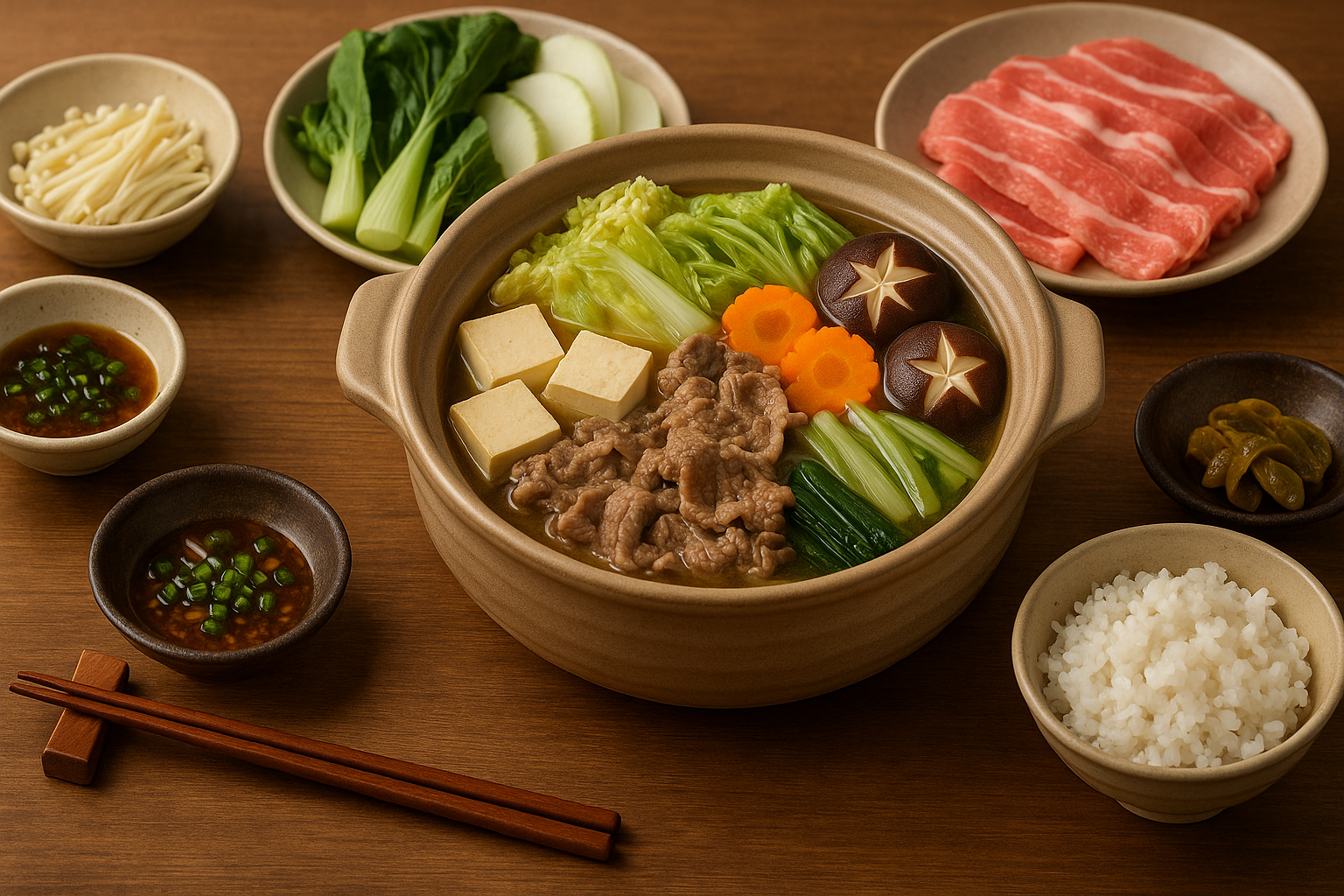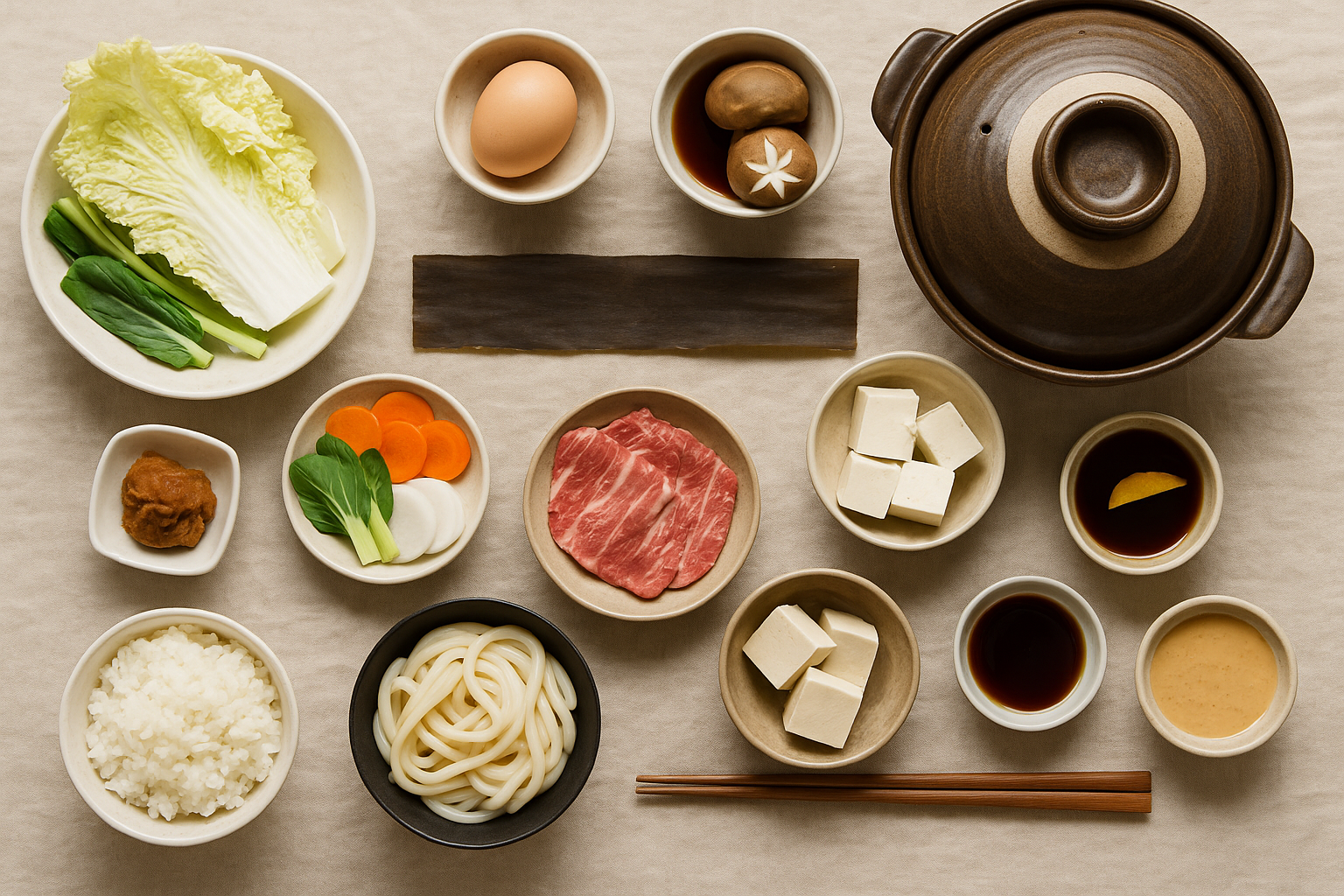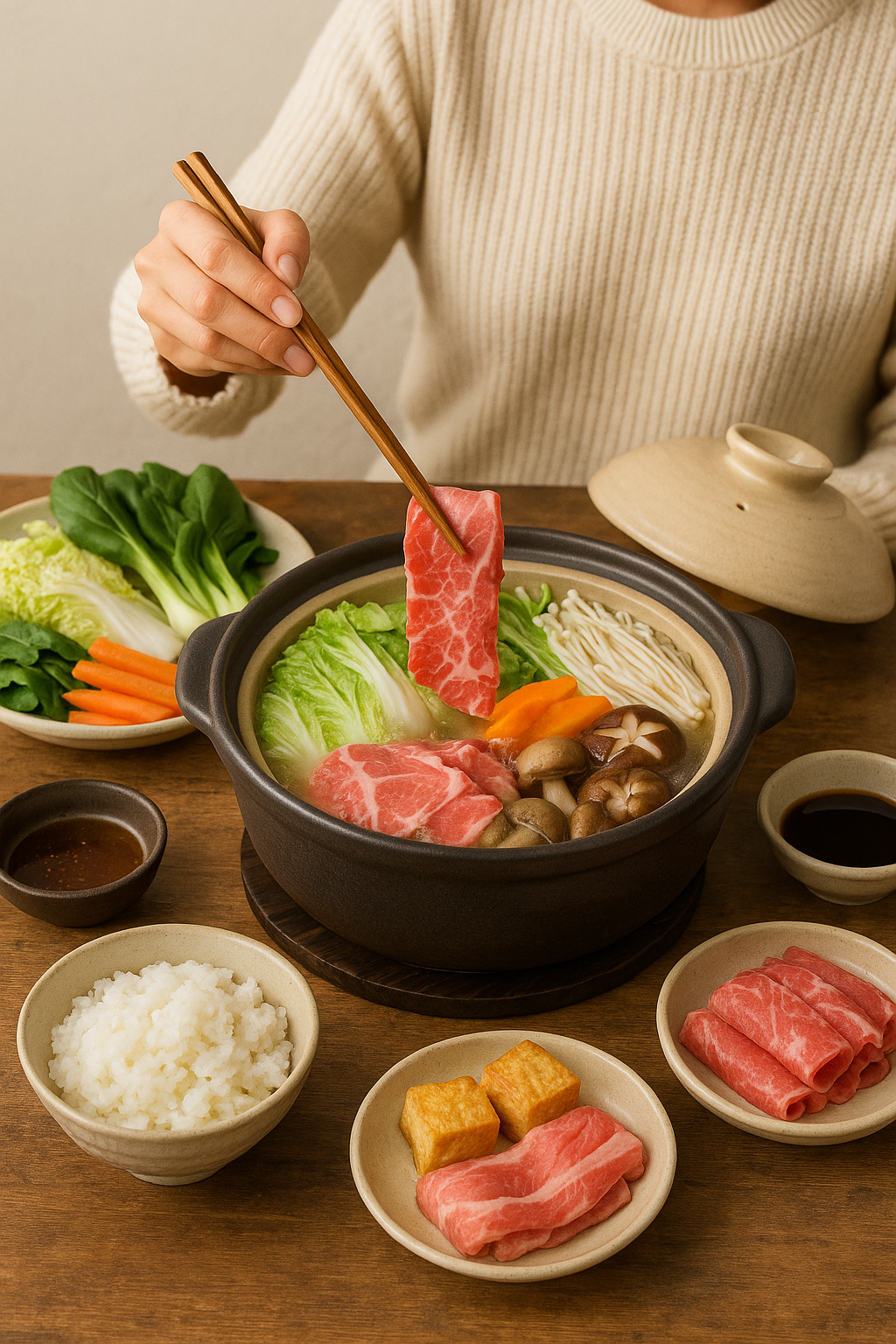What Is Nabe? Japan’s Coziest One-Pot Meal Explained
Nabe (鍋) literally means “pot” in Japanese — and refers to both the dish and the style of eating. A bubbling hot pot of broth takes center stage on the table, where you gently cook vegetables, tofu, meat or fish together — and serve as you go.
It’s comfort food, communal cooking, and a self-serve dinner party all rolled into one.
Why Is Nabe So Popular?
Nabe isn’t just about eating. It’s about sharing and enjoying food together, right at the table.
✔️ Cook together at the table
✔️ Everyone picks what they like
✔️ Fresh, light and nourishing
✔️ Perfect for cold weather or festive evenings

What Do You Need to Make Nabe?
Setting up your own nabe night is easier than you think. Here's what you need:
A donabe (earthenware pot) or deep pan
A broth base, like kombu dashi, chicken broth or miso
Dipping sauces, such as ponzu, sesame or yuzu sauce
Rice or noodles for the finishing touch (called shime)
Typical Ingredients for the Pot
Nabe is endlessly customizable. Choose ingredients based on the season, your taste or dietary needs.
Vegetables
Napa cabbage
Bok choy
Spinach
Daikon radish
Carrot
Spring onion
Mushrooms
Shiitake
Enoki
Oyster mushrooms
Proteins
Soft or fried tofu
Thinly sliced beef
Chicken breast
White fish
Shime: Closing the meal
Udon noodles
Ramen
Steamed rice

Popular Types of Nabe
Each nabe style brings a unique flavor and experience:
Yose nabe – A hearty all-in-one with meat, seafood and vegetables
Sukiyaki – A sweet soy sauce-based broth, often with beef
Shabu shabu – Light dashi broth for swishing and dipping thin meat slices
Kimchi nabe – A spicy Korean-style twist with kimchi and tofu
How to Host a Nabe Dinner at Home
Want to enjoy nabe the authentic way? Follow these simple steps:
Place a large donabe or pot on a portable gas stove at the table
Prepare the broth in the pot
Arrange all ingredients in bowls or plates around the table
Let guests add, cook, and scoop as they wish
Finish the meal with rice or noodles that soak up all the flavor

Tjin’s tip:
Want to end your nabe on a cozy note? Just crack a raw egg into your bowl of rice at the end and stir it through the hot broth. In Japan, this is called tamago zosui.
The heat from the soup gently cooks the egg, turning your rice into a creamy, comforting rice porridge. It soaks up all the rich flavors from the pot — warm, smooth, and seriously satisfying. Definitely worth trying!




 New Arrivals
New Arrivals
 Outlet
Outlet
 Search by country
Search by country
 Search per category
Search per category
 Holiday Season
Holiday Season
 Recipes
Recipes
 Tjin's Blog
Tjin's Blog









